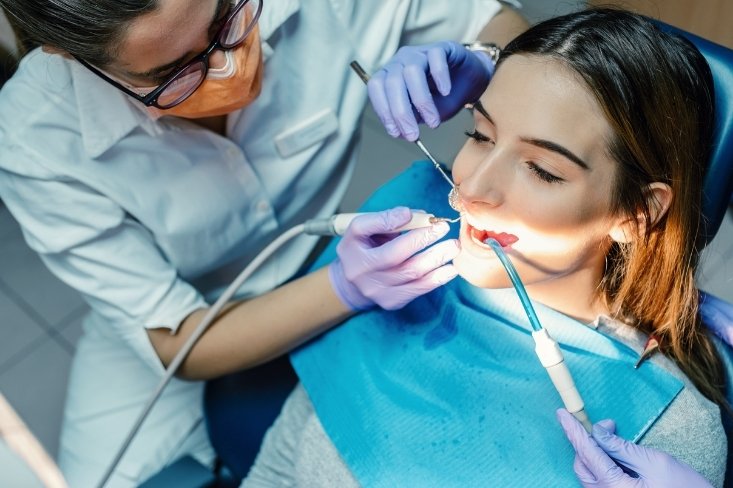704-844-2943
AVAILABLE FOR EMERGENCIESHome Remedies for Tooth Abscess Relief: What Works and What Doesn’t?

Tooth abscesses can be intensely painful and require immediate attention to prevent complications. Understanding the symptoms and effective home remedies can offer relief while awaiting professional dental care. A tooth abscess typically arises from bacterial infection, often due to untreated dental decay or trauma to the tooth. It manifests as a pocket of pus around the tooth root, causing severe throbbing pain, swelling, and sometimes fever. While professional dental treatment is crucial, certain home remedies can provide temporary relief and support healing.
Exploring these remedies requires discernment, as not all purported solutions are effective or safe. This blog outlines tried-and-tested home remedies like aloe vera gel, salt water rinses, and garlic, which are known for their antibacterial and anti-inflammatory properties. It also debunks common misconceptions about ineffective remedies such as acidic substances and aspirin applications. By understanding what works and what doesn’t, readers can make informed decisions to alleviate symptoms and promote oral health before seeking professional dental intervention.
Understanding Tooth Abscess
A tooth abscess is a painful condition characterized by a buildup of pus around the tooth root or in the gums. It typically occurs due to bacterial infection, often stemming from untreated dental decay, gum disease, or dental trauma. Here are the key aspects to understand:
Types of Tooth Abscess:
- Periapical Abscess: Occurs at the tip of the tooth’s root due to untreated dental decay or trauma, affecting the tooth’s nerve and pulp.
- Periodontal Abscess: Forms in the gums alongside the tooth root, primarily due to gum disease (periodontitis) causing pockets of infection.

Symptoms of Tooth Abscess
Tooth abscesses can manifest with several noticeable symptoms, indicating the presence of infection and requiring prompt dental attention. Here are the key signs to watch for:
- Severe Toothache: Persistent, throbbing pain that may radiate to the jawbone, ear, or neck.
- Swelling: Visible swelling or a bulge in the gum near the affected tooth, often accompanied by redness.
- Sensitivity: Increased sensitivity to hot or cold temperatures, along with discomfort when biting or chewing.
- Fever: Systemic signs such as fever indicate the body’s response to infection.
Effective Home Remedies for Tooth Abscess
Home remedies can offer relief for tooth abscess symptoms, complementing professional dental care. Here are effective options to consider:
- Aloe Vera Gel: Known for its antibacterial and anti-inflammatory properties, aloe vera gel can help reduce swelling and discomfort when applied topically to the affected area.
- Saltwater Rinses: A simple yet effective remedy, rinsing with warm salt water helps cleanse the mouth, reduce inflammation, and alleviate pain associated with tooth abscesses.
- Garlic: With natural antibiotic properties, garlic can combat bacterial infections. Chewing a clove of garlic or applying crushed garlic directly to the abscessed area may help manage infection and promote healing.
- Turmeric Paste: Turmeric contains curcumin, which is known for its anti-inflammatory and antimicrobial properties. Applying a paste of turmeric and water directly to the abscess can aid in reducing pain and swelling.
- Cold Compress: Applying a cold compress to the outside of the cheek near the affected tooth can help numb the area and reduce swelling and inflammation.
These home remedies can provide temporary relief from tooth abscess symptoms. However, it’s essential to seek professional dental care for proper diagnosis and treatment. Dentists can prescribe antibiotics if necessary and perform procedures like draining the abscess or root canal therapy to address the underlying cause and prevent complications.
Debunking Ineffective Remedies
When it comes to managing a tooth abscess, it’s crucial to separate effective remedies from those that can potentially exacerbate the condition or cause harm. Here’s a closer look at some debunked remedies:
- Lemon Juice and Other Acidic Substances: Lemon juice and other acidic substances may seem like natural choices for their antibacterial properties. However, their high acidity can erode tooth enamel and irritate sensitive gum tissues, worsening pain and inflammation associated with a tooth abscess.
- Aspirin Directly Applied to the Affected Area: Applying aspirin directly to the abscessed tooth or gum is a popular myth. However, placing aspirin against the gums can lead to chemical burns and tissue damage. Moreover, aspirin is designed for oral ingestion and should not be applied topically as it can cause serious irritation and burning sensations.
- Hydrogen Peroxide for Oral Use: While hydrogen peroxide is effective for cleaning wounds, using it as a mouth rinse or applying it directly to a tooth abscess is not recommended. It can irritate the gums, cause tissue damage, and potentially delay healing. Moreover, hydrogen peroxide does not effectively target the bacteria causing the abscess, and its use in the mouth can disrupt the natural balance of oral flora.
It’s essential to avoid these debunked remedies and instead focus on safer and more effective options endorsed by dental professionals. Home remedies like aloe vera gel, salt water rinses, and garlic possess antibacterial properties without the harmful side effects of acidic substances, aspirin, or hydrogen peroxide.
When to Seek Professional Help?
While home remedies can provide temporary relief from the pain and inflammation caused by a tooth abscess, professional dental intervention remains crucial for proper treatment and long-term resolution. Recognizing when to seek help from a dentist in Matthews, NC, can prevent complications and ensure effective treatment.
Signs Indicating the Need for Dental Intervention:
- Severe Pain and Swelling: If the pain becomes intense, persistent, or the swelling worsens, immediate dental care is necessary.
- Fever and Malaise: A tooth abscess accompanied by fever, chills, or a general feeling of being unwell signals a spreading infection that requires prompt medical attention.
- Difficulty Breathing or Swallowing: These symptoms indicate the infection may have spread to deeper tissues or airways, necessitating emergency intervention.
- Visible Pus or Drainage: Pus or a foul taste in the mouth signifies an active infection that needs professional drainage and treatment.
- Redness and Swelling in the Face or Jaw: This can indicate the infection is spreading beyond the tooth and gum area, potentially leading to serious complications.
Treatment Options Available for Tooth Abscess:
- Antibiotics: Dentists prescribe antibiotics to combat bacterial infections and prevent further spread.
- Drainage: The dentist will create a small incision in the abscess to drain the pus, alleviating pain and pressure.
- Root Canal Therapy: This procedure removes the infected pulp, cleans the inside of the tooth, and seals it to prevent reinfection.
- Tooth Extraction: In severe cases where the tooth cannot be saved, extraction might be necessary to prevent the infection from spreading.
- Surgical Procedures: For deep or extensive infections, surgical intervention might be required to remove the abscess and infected tissue.
Home remedies can offer temporary relief from tooth abscess symptoms, but professional dental care remains essential for effective treatment and prevention of complications. Recognizing the signs that necessitate dental intervention ensures timely and appropriate care. Always consult a dentist if symptoms persist or worsen to maintain optimal oral health and prevent serious issues.


